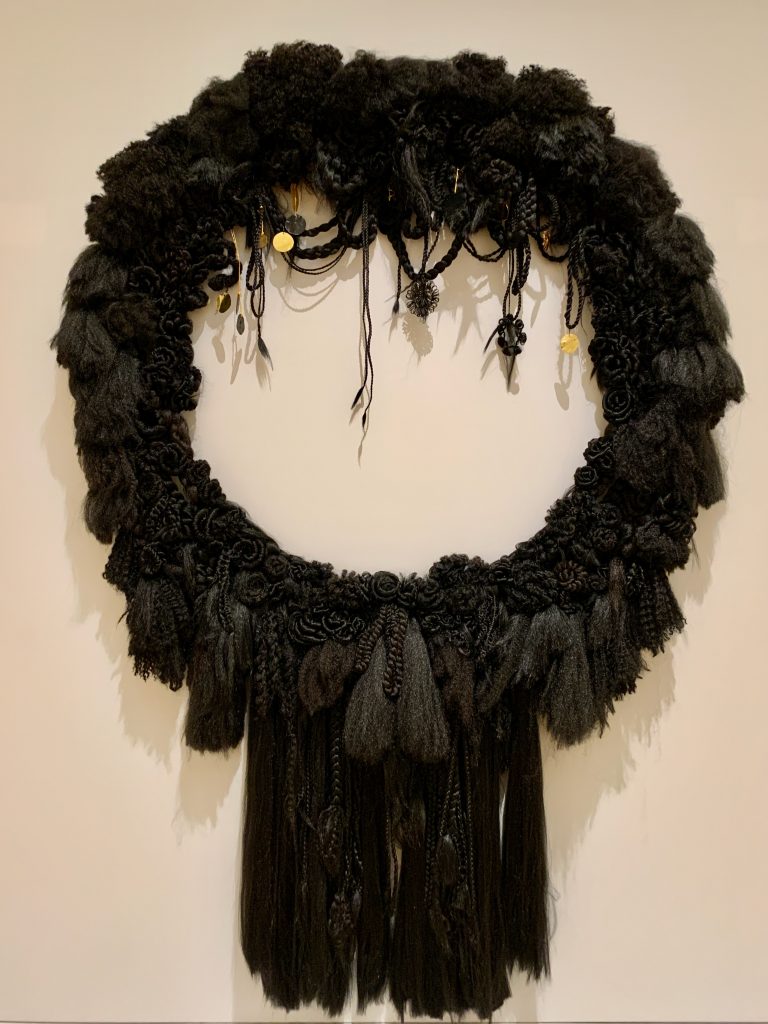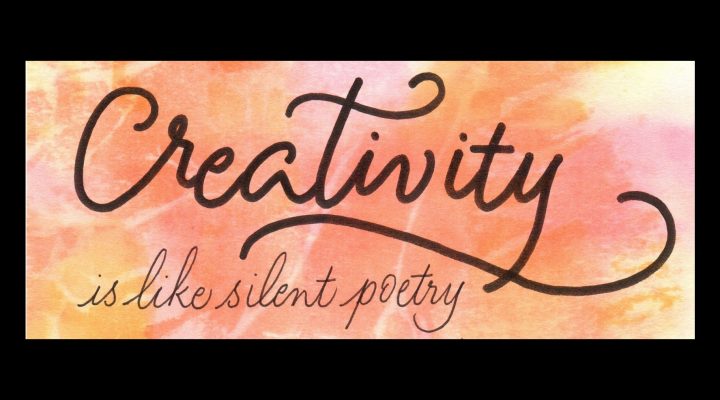Have you noticed how museum exhibitions, like everything else, have changed? As a creative person, I’ve quietly observed this for years while visiting museums on the West Coast. Big changes were a topic of conversation recently at Crocker Art Museum in Sacramento, Calif. The one thing we all agreed on was “Art is Life.”

“Mourning Wreath” by Angela Hennessy: Synthetic hair, artist’s hair, imitation and 24k gold leaf on copper, enamel paint, chain. Crocker Art Museum.
No wonder, then, that an afternoon in the museum reflected current news headlines — music for freedom, dismantling gender roles, psychological damage to children and mourning wreaths from around the world.
Historically, people created art, consciously or subconsciously, to imitate real life. The criteria for evaluation included technical achievement and style, as well as the artist’s ability to communicate a message, including that of famous art movements.
Impressionism, one of the most influential art styles in Western history, was such a movement. It began in the late 1800s, when Parisian painters rebelled against classical subject matter and created modern works to reflect the actual world they lived in.
Rather than seek the perfection of the past, Impressionists painted outdoors to capture what they saw, thought and felt. They explored how light could define a moment in time, using color instead of lines for definition.
Museums show us various art styles as well as glimpses into the creators’ worlds. Memorable art causes us to think or feel, often acknowledging a spiritual connection, too.
Museums show us various art styles as well as glimpses into the creators’ worlds. Memorable art causes us to think or feel, often acknowledging a spiritual connection, too.
Creating is a calling that can happen to anyone who cares deeply and is willing to explore. All of us are created to create by our Maker in wonderfully diverse ways, whether in the studio, garden or kitchen. It’s a journey worth taking because it connects us to life in a meaningful way.
You may be familiar with William Morris, for example, who is known for his multi-faceted career in the Victorian period of home decor. Morris designed functional, beautiful tapestries, wallpaper, fabrics, furniture and stained-glass windows while also writing and advocating for change as a social activist. Then, too, art merged with change and activism.

“Freedom” by Michael Cummings: Quilt with appliqué including machine sewn cotton fabrics, ceramic beads and textile markers. Crocker Art Museum.
When the pandemic changed lives in the United States, voices of cultures became louder in activism. Now, change hangs on museum walls alongside a statement or storytelling.
We no longer can just observe when the image and words pull us into the emotions and message of the creator. Now, we learn, empathize, understand, respond and even participate. Museums guide viewers with a subhead next to the art pointing out what to “look for” in the art, which directs us toward acceptance and change.
“It makes sense that storytelling is appropriate to the work of a museum, for museums are storytellers.”
“It makes sense that storytelling is appropriate to the work of a museum, for museums are storytellers,” blogger Leslie Bedford said. “They exist because once upon a time some person or group believed in a story worth telling, over and over, for generations to come.”
The Smithsonian Institution collects historical storytelling and photos in an interactive format. “These ‘digital time capsules’ will allow museum curators and future historians to document, study and interpret this moment in history,” the Smithsonian’s website explained.
The last of the Crocker exhibitions we saw — about artificial intelligence, or AI, also current news — was both informative and concerning. From computer-generated quilts to machines that popped bubble wrap, it surveyed what’s already happening in AI with humorous, creative inventions.
And it’s very interactive. When I told the AI machine to generate an image of a cat napping, it aimed to please by producing four styles. I chose one image. It then selected a sleeping cat, giving me a receipt that mentioned the lighting, as the Impressionists would have done, and the emotions of peace and tranquility. All this in a few minutes. Creative? Well, maybe. Of course, I wondered where the painting came from and if it were copyrighted!
In a podcast, Adina Langer, a museum professional who recently worked on the 9/11 Memorial Museum in New York City, defined museums’ new role: It’s “about education and engagement and helping people to understand their place in the world and how connecting with the past can enable them to better experience the present, to make sense of their lives.”
I like her forecast. If making sense of change by hearing human experiences is on the horizon for the new year, I think I’ll plan another museum visit soon and linger awhile.

Phawnda Moore
Phawnda Moore is a Northern California artist and award-winning author of Lettering from A to Z: 12 Styles & Awesome Projects for a Creative Life. In living a creative life, she shares spiritual insights from traveling, gardening and cooking. Find her at Facebook: Calligraphy & Design by Phawnda and Instagram: phawnda.moore
Related articles:
A walking guide to praying in your home


